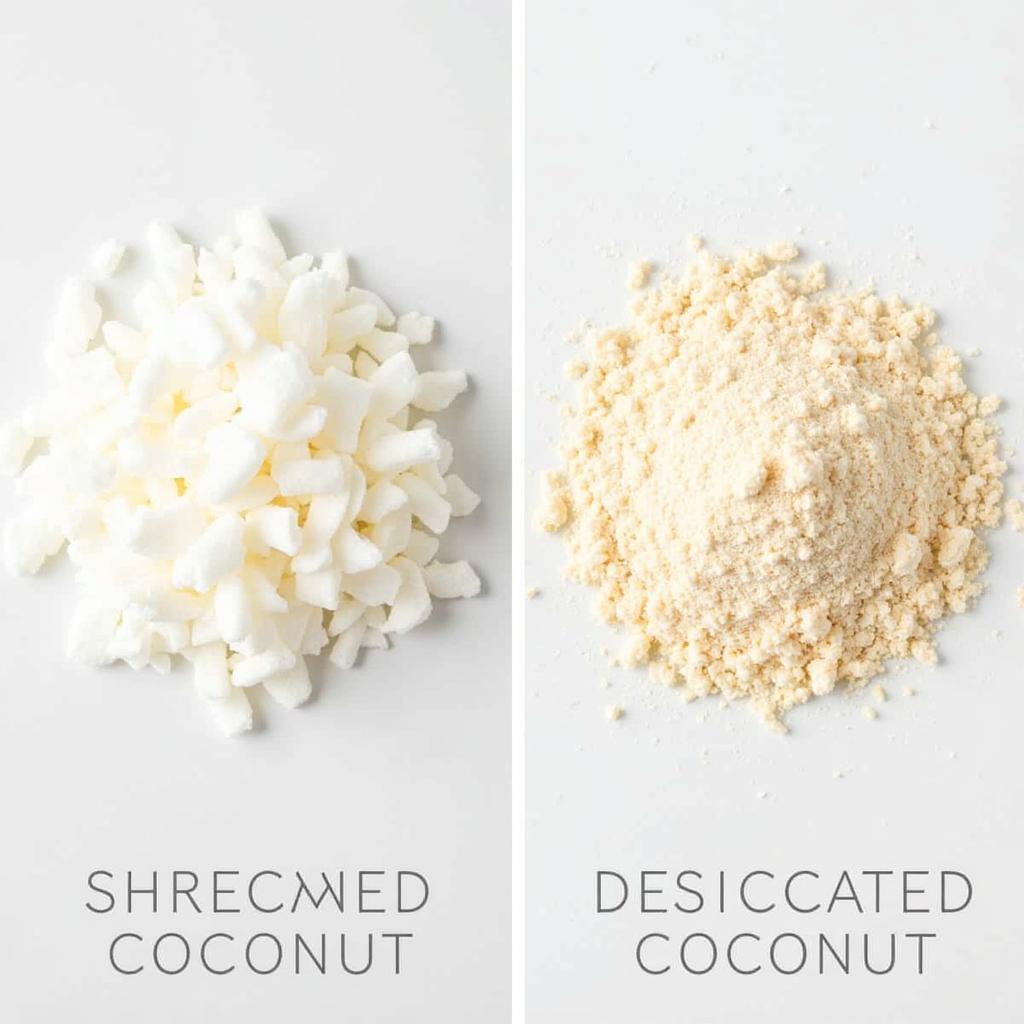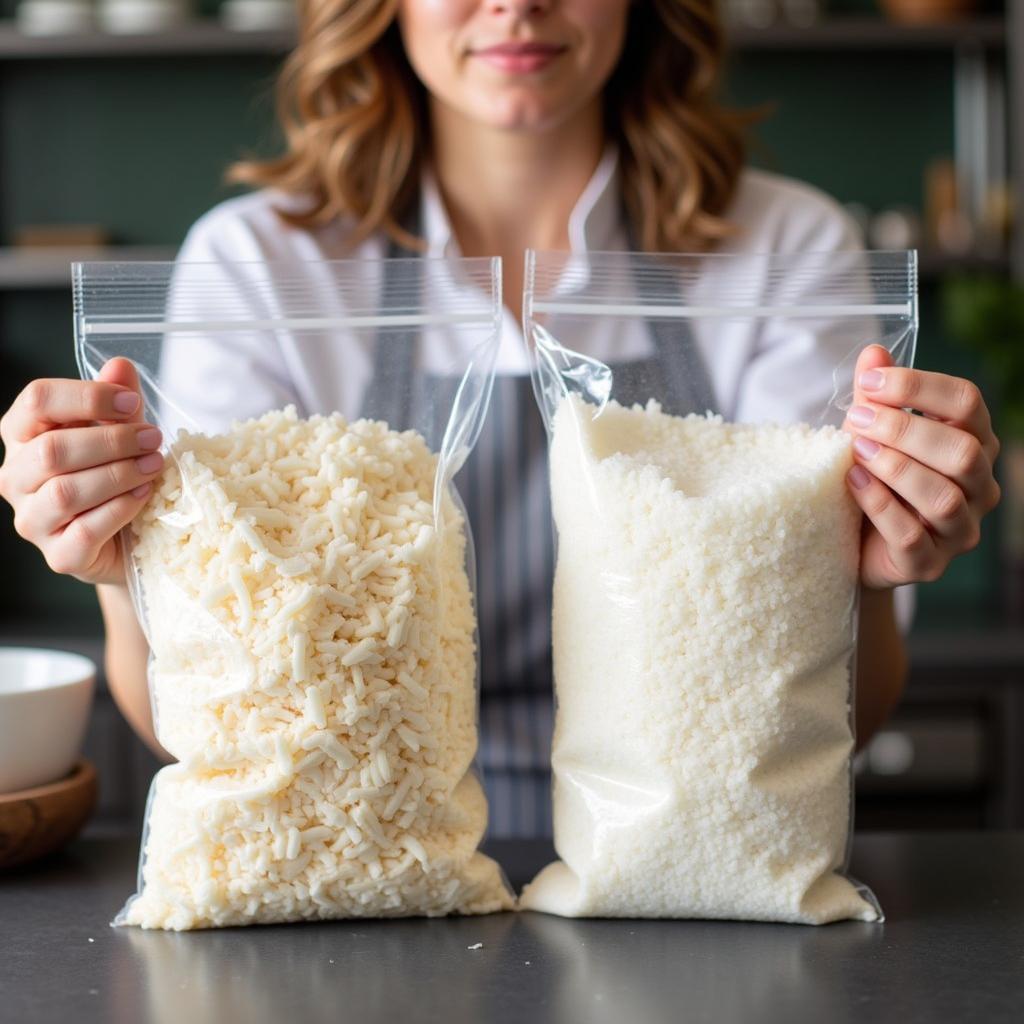Shredded coconut and desiccated coconut are both popular ingredients derived from mature coconuts, yet they differ in texture, moisture content, and culinary uses. Understanding these differences can help you choose the right type of coconut for your specific needs.
Texture and Appearance
The most noticeable difference between shredded and desiccated coconut lies in their texture and appearance.
Shredded coconut, as its name suggests, consists of larger, coarser flakes or shreds of coconut meat. These pieces are typically longer and wider, resembling shavings or ribbons. The texture is slightly chewy and moist.
Desiccated coconut, on the other hand, is finely ground coconut meat that has been completely dried. It has a powdery, fine texture and a light, fluffy appearance.
 Shredded Coconut vs Desiccated Coconut
Shredded Coconut vs Desiccated Coconut
Moisture Content and Processing
The difference in texture stems from the variations in processing and moisture content.
Shredded coconut retains a higher moisture content, typically around 5-10%. After cracking open mature coconuts, the meat is removed, shredded, and often sweetened before being packaged.
Desiccated coconut, in contrast, undergoes further processing to remove almost all moisture, resulting in a moisture content of less than 3%. After shredding, the coconut meat is dried and ground into a fine powder.
Culinary Uses
Both shredded and desiccated coconut add a distinct coconut flavor and texture to various dishes, but their applications differ based on their unique properties.
Shredded coconut is commonly used:
- As a topping for desserts like cakes, pies, and puddings.
- In baked goods like cookies and muffins to add texture and flavor.
- In savory dishes, particularly in South Asian and Southeast Asian cuisines, for curries, stews, and stir-fries.
- To make coconut milk by blending with water and straining.
Desiccated coconut is often preferred:
- In confectionery, such as candies and chocolates, where a smooth texture is desired.
- In frostings and icings to add a subtle coconut flavor.
- As a thickening agent in sauces and soups.
- In energy bars and granola bars for added texture and flavor.
Which One Should You Choose?
The choice between shredded and desiccated coconut depends on the specific recipe and the desired outcome.
For a chewy texture and intense coconut flavor, shredded coconut is the better choice.
For a smooth texture and subtle coconut flavor, opt for desiccated coconut.
 Choosing the Right Coconut
Choosing the Right Coconut
Conclusion
Both shredded and desiccated coconut are versatile ingredients that can elevate your culinary creations. Understanding their differences in texture, moisture content, and culinary applications can help you make informed choices in the kitchen. Whether you’re looking for a chewy topping or a smooth ingredient for your next culinary masterpiece, choosing the right type of coconut can make all the difference.
FAQs
Q: Can I substitute shredded coconut for desiccated coconut and vice versa?
A: While they can sometimes be substituted, it’s important to note that the results may vary in terms of texture and moisture.
Q: How should I store shredded and desiccated coconut?
A: Store both types in airtight containers in a cool, dry place.
Q: What is the shelf life of shredded and desiccated coconut?
A: Shredded coconut typically lasts for a few weeks, while desiccated coconut can last for several months.
For further assistance, please contact us at Phone Number: 0372999888, Email: aibongda@gmail.com, or visit us at 236 Cầu Giấy, Hanoi. Our customer service team is available 24/7.